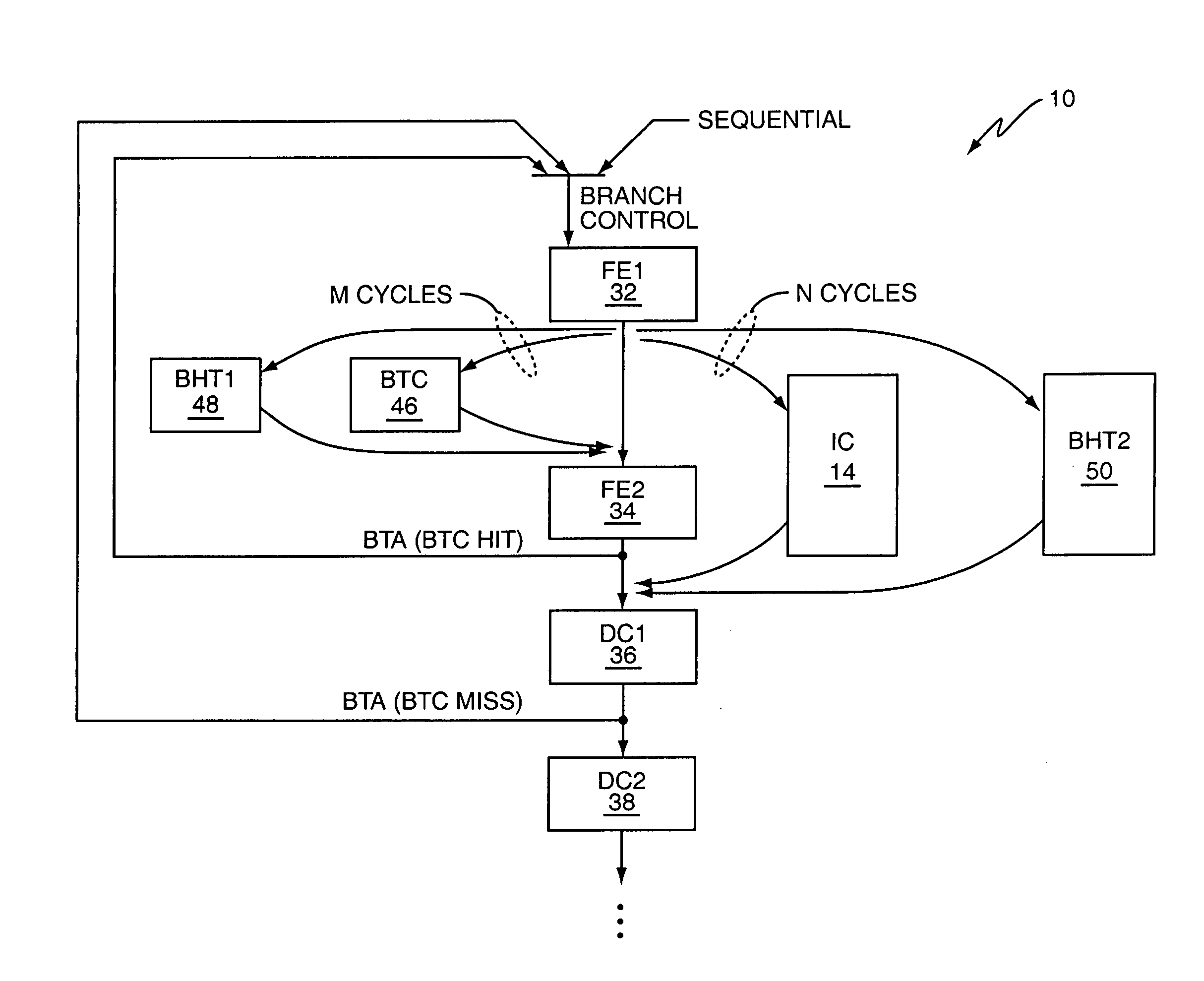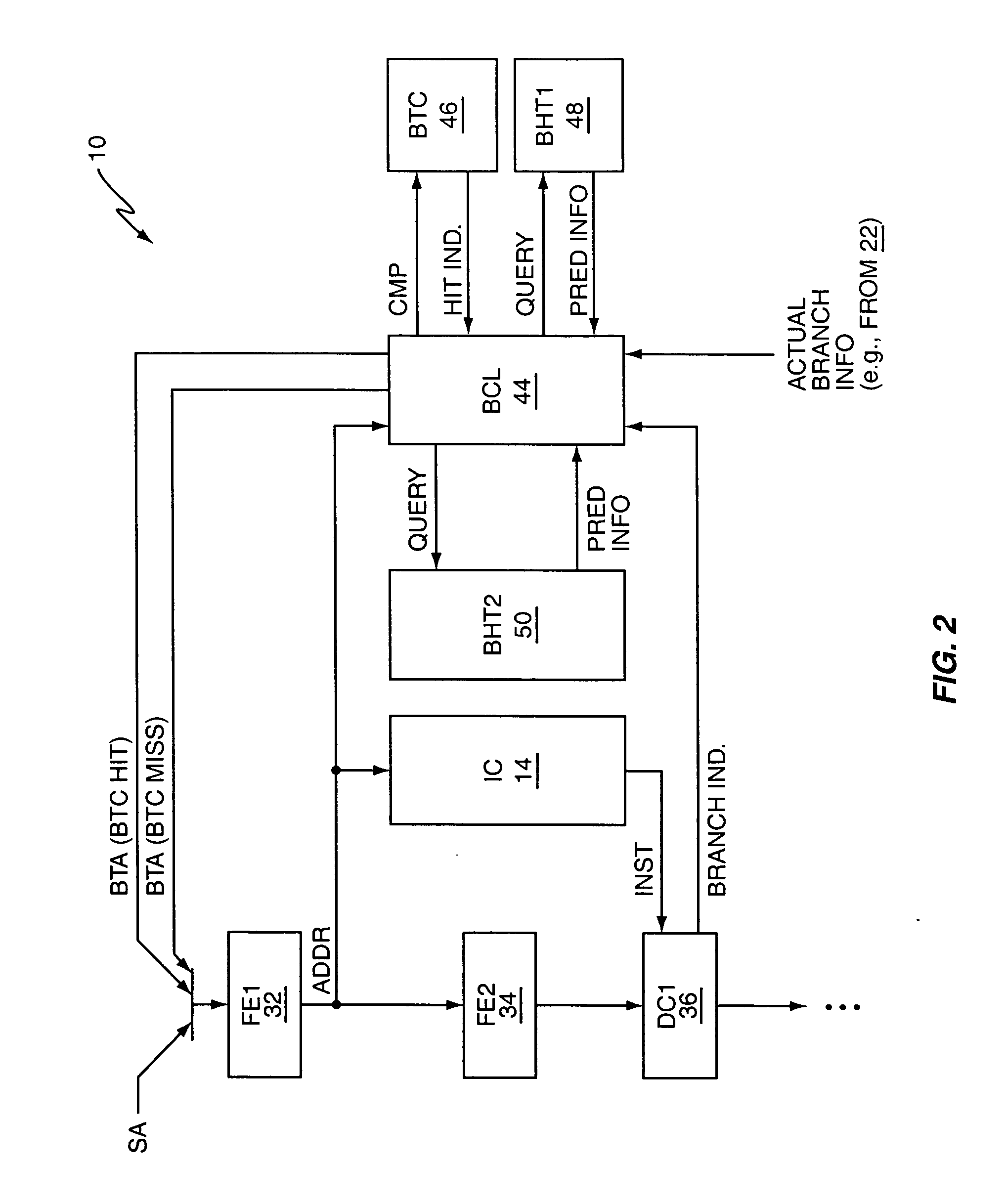Method and apparatus for predicting branch instructions
a branch history and instruction technology, applied in the field of microprocessors, can solve the problems of limiting the ability to realize further branch prediction performance gains, large branch history tables generally are not accessible quickly enough, and untimely availability, and achieve the effect of significant flexibility in configuring the size and accuracy of the second branch history tabl
- Summary
- Abstract
- Description
- Claims
- Application Information
AI Technical Summary
Benefits of technology
Problems solved by technology
Method used
Image
Examples
Embodiment Construction
[0019] By way of non-limiting example, FIG. 1 illustrates a microprocessor 10, which may comprise a pipelined RISC microprocessor. In the illustrated embodiment, the microprocessor 10 comprises input / output (I / O) circuits 12, an instruction cache 14, a data cache 16, and an instruction pipeline 18, which comprises a front-end circuit 20, an execution unit 22, and a completion unit 24.
[0020] In operation, the front-end circuit 20 fetches instructions from the instruction cache 14, which may be an on-board Level 1 (L1) cache. The instructions are fetched according to a defined computer program flow, which may include program branches or jumps. The microprocessor 10 uses branch prediction to predict whether conditional branches will be taken or not taken, such that it generally does not interrupt its instruction fetching operations when conditional branch instructions are encountered.
[0021] Fetched instructions are decoded and issued to the execution unit 22, which can be implemented...
PUM
 Login to View More
Login to View More Abstract
Description
Claims
Application Information
 Login to View More
Login to View More - R&D
- Intellectual Property
- Life Sciences
- Materials
- Tech Scout
- Unparalleled Data Quality
- Higher Quality Content
- 60% Fewer Hallucinations
Browse by: Latest US Patents, China's latest patents, Technical Efficacy Thesaurus, Application Domain, Technology Topic, Popular Technical Reports.
© 2025 PatSnap. All rights reserved.Legal|Privacy policy|Modern Slavery Act Transparency Statement|Sitemap|About US| Contact US: help@patsnap.com



